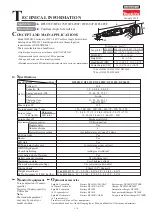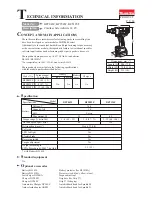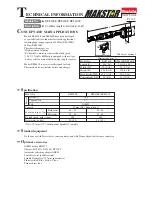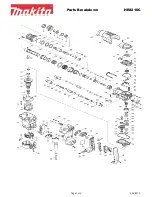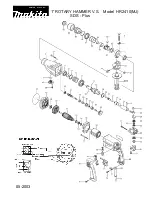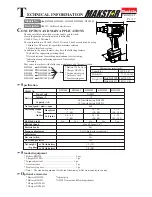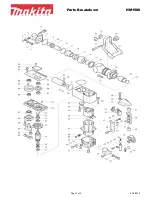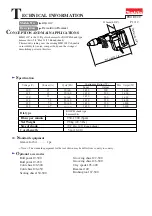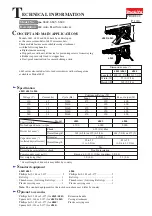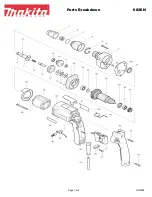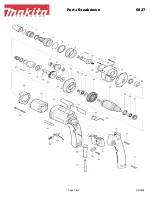
15
Issue 13 (11/14/2017)
4.4 Wiring
Connect input, output, control and monitor wiring to the power supply according to the following procedure. Refer
to Figs.
3-1
and
4-1
for control and connector positions.
1. Operate the AC line circuit breaker in the service entrance box to the OFF position. If the power supply
is located at a head end or other customer premise site, ensure that the branch circuit breaker chosen to
protect the AC receptacle for the power supply is operated to the OFF position.
2. Operate the BATTERY CIRCUIT breaker on the front panel of the power supply to the OFF (O) position.
NOTE
Power supply output wiring to the load(s) will be connected in the following
steps. For safety of installation personnel and ease of wiring, two-piece terminal
blocks containing the wiring contacts may be unplugged from the stationary
portion in the power supply.
3. Apply the system loads to the OUTPUT connectors on the front panel of the power supply as follows:
a) If a single load only will be operated from the power supply, connect output wiring to the OUTPUT
1 terminals, line (L) and neutral (N). Wire size of 4-mm² area or 12 AWG is recommended. Use
a wire with a temperature rating of at least 105°C.
b) If multiple loads will be operated from the power supply, connect the highest priority load to
OUTPUT1 terminals, line (L) and neutral (N). Connect remaining loads in order of their priority to
the terminals of OUTPUT2, line (L) and neutral (N). Use appropriate wire sizes based on the
anticipated current draw of each load.
CAUTION
Do not load the power supply to a level greater than its total rated output.
Ensure that a minimum load of greater than 1 ampere is applied. Subjecting the
power supply to long-term overloads or no load conditions can result in
permanent damage.
4. Connect the AC line cord from the power supply to the appropriate AC receptacle.
5. Insert the battery plug from the battery wiring harness into the mating BATTERY INPUT receptacle on the
front panel of the power supply.
6. Insert the temperature sensor plug into the mating TEMP PROBE receptacle on the front panel of the
power supply. The body of the temperature sensor probe should be placed between two of the battery
cases in the enclosure.
7. If desired and so equipped, the cabinet tamper switch may be connected to the TAMPER SWITCH
receptacle on the front panel.
8. If desired and so equipped, the cabinet status lights may be connected to the CABINET INDICATOR
receptacle on the front panel.
9. If remote monitoring of the power supply is desired, connect the RF cable to the status monitor
transponder or an external transponder to the SERIAL receptacle on the front panel of the power supply
and connect the RF cable to external transponder.
Initial installation and wiring is now complete.
Summary of Contents for EB1s
Page 2: ......
Page 35: ...33 Issue 13 11 14 2017 Fig 8 1 Battery Balancer wiring 36V 3 batteries 1 string ...
Page 36: ...34 Issue 13 11 14 2017 Fig 8 2 Battery Balancer wiring 48V 4 batteries 1 string ...
Page 37: ...35 Issue 13 11 14 2017 Fig 8 3 Battery Balancer wiring 36V 6 batteries 2 strings ...
Page 38: ...36 Issue 13 11 14 2017 Fig 8 4 Battery Balancer wiring 48V 8 batteries 2 strings ...































